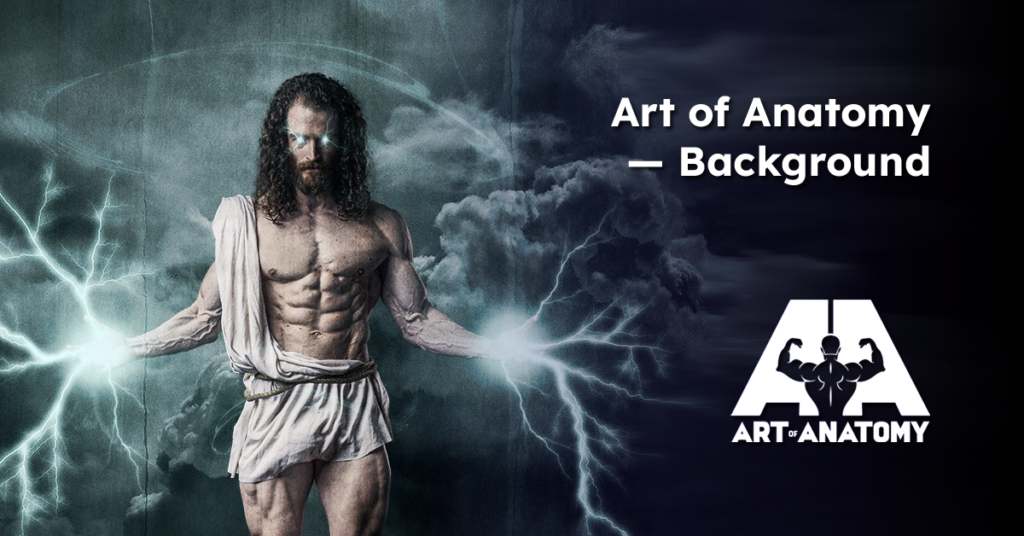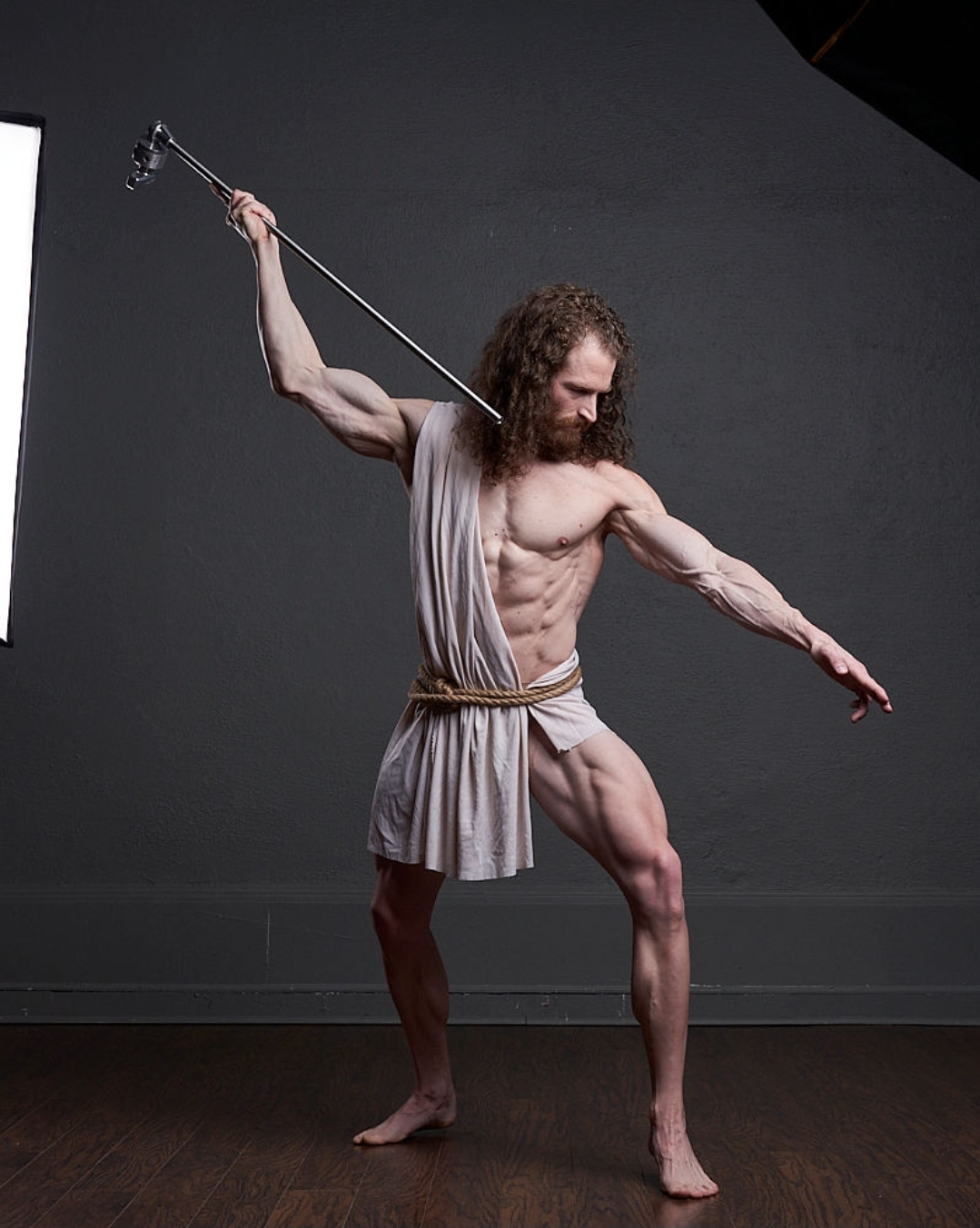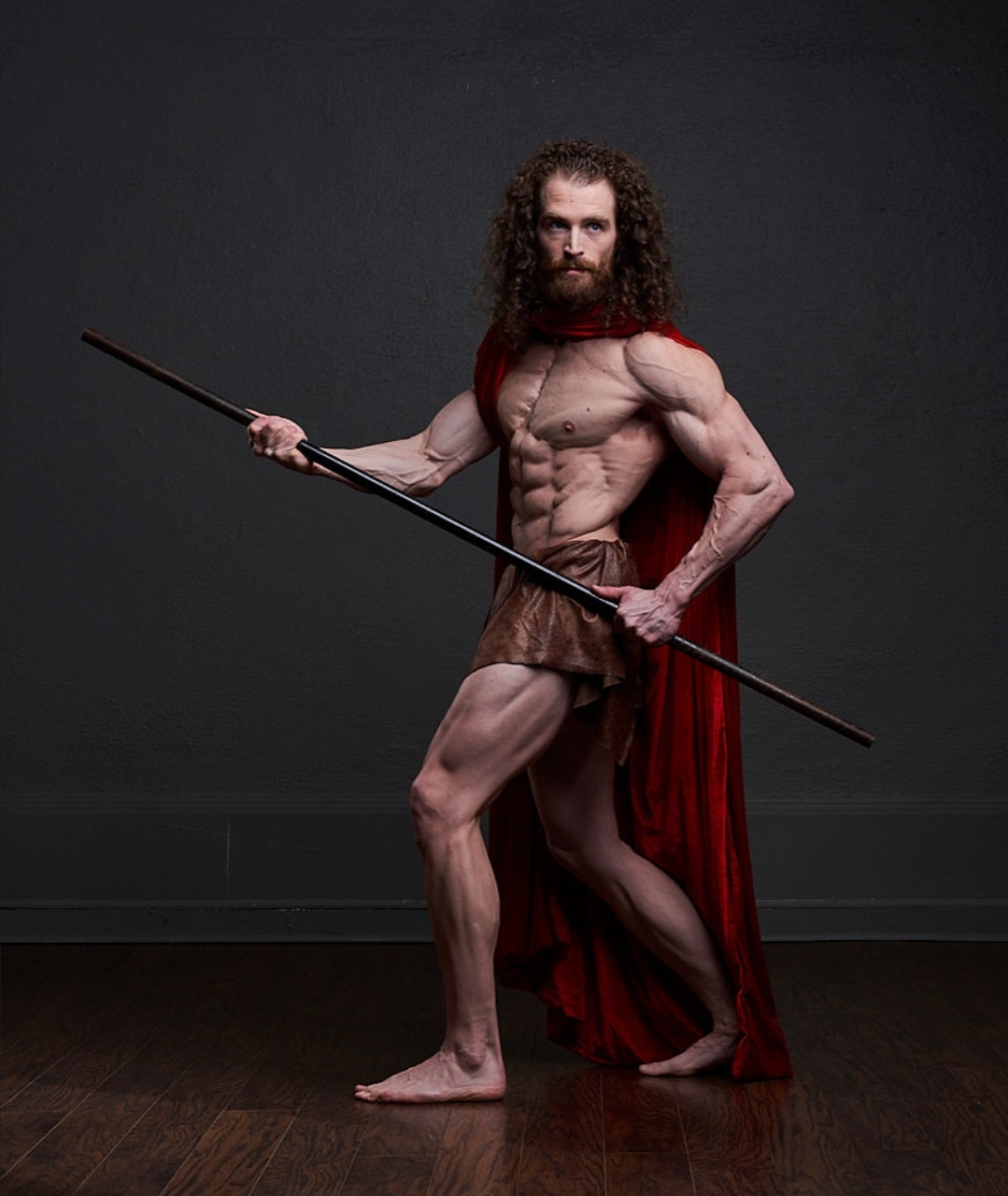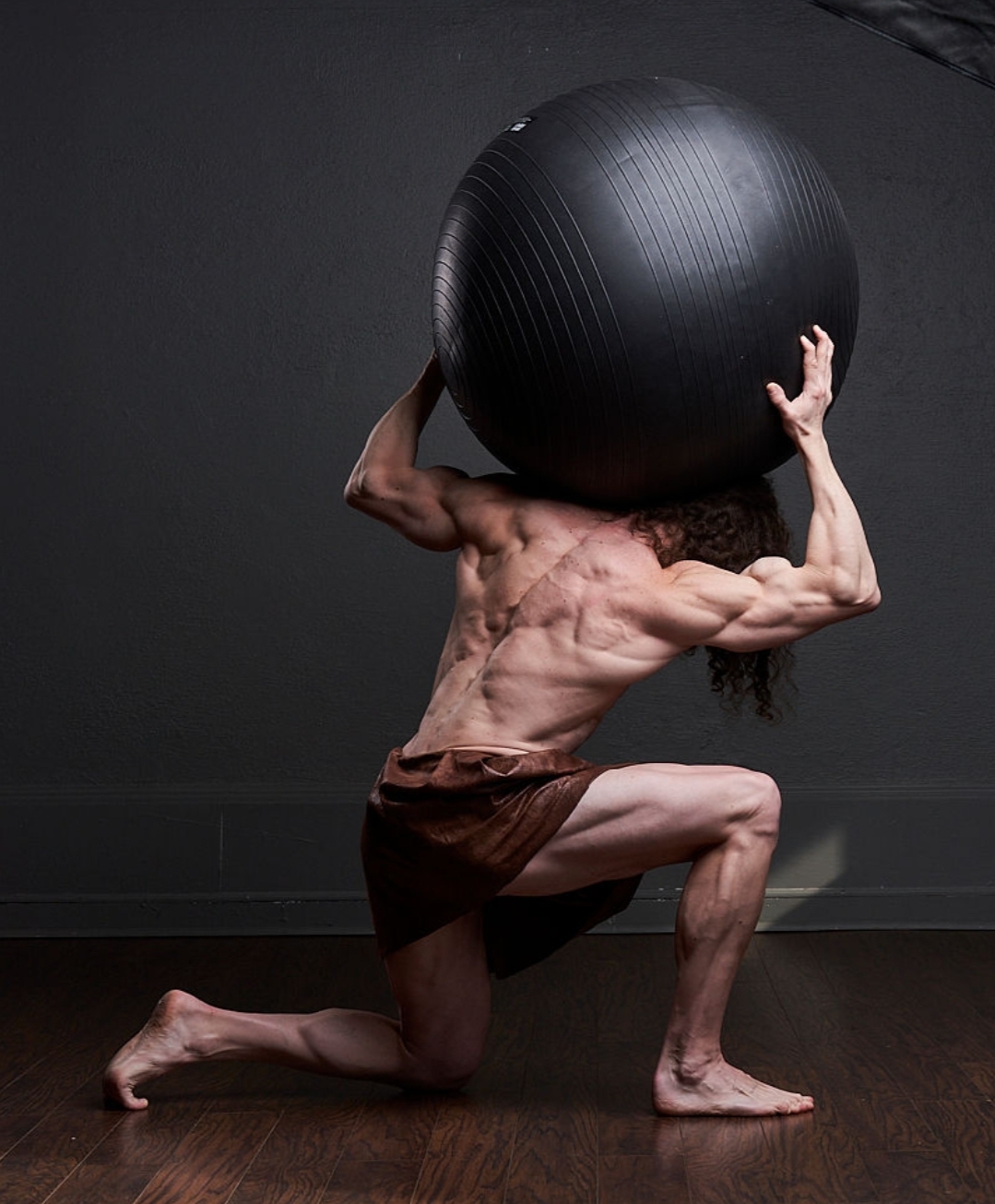Background of Art of Anatomy

Page Contents
The human body is the most magnificent machine in existence. And, with a sufficient understanding of the science of exercise, the human body can also be transformed into the most magnificent work of art in existence.
Arnold Schwarzenegger, likely the most famous and among the greatest bodybuilders in history, once related his efforts as a bodybuilder to that of a sculptor. He stated he has “the same mind when it comes to sculpting [his body] that a sculptor has.” He stated exercise was a bodybuilder’s technique to achieve the greater size and balanced proportions in their body—similar to a sculptor adding more clay to create the appropriate size and proportions on a statue.
Kai Greene, another exceptional professional bodybuilder, also described his efforts as an art form. He stated, “your body is the canvas, weights are your brush, and nutrition is the paint. We all have the ability to turn a self-portrait into a masterpiece.” Art of Anatomy will teach you the science necessary to become a brilliant artist of your own anatomy to create that masterpiece.
Like Schwarzenegger and Greene have stated, exercise is one of the most valuable tools at your disposal to create a masterpiece physique. However, you cannot effectively utilize this tool until you understand the mechanics of the muscles and joints and some of the basic physiologic principles of exercise.
In other words, the artistry cannot exist without a reasonable understanding of the science. Unfortunately, many people first learn about individual exercises as a target for a specific muscle (e.g., “bench press will work your chest muscles”), and this is always the wrong approach.
The best way to learn about exercise is by learning the anatomy of the target muscle(s), the biomechanics of each movement performed (e.g. planes of motion and joint actions), and some basic physiology of exercise.
Knowing the science will allow you to understand how a muscle can create joint movement. Once you understand a target muscle’s ability to create movement, you are then able to put those movements under appropriate resistance to elicit muscle growth.
Who’s behind the brand?
About me: Corey J. Csakai, DC
My journey through the fitness world began when I was a freshman in high school in 2005. I was a scrawny, 15-year-old kid with neither knowledge nor interest in working out. I was a member of a local gym because it had a basketball court; the weight room was foreign to me, and I was not eager to become familiar with the fitness equipment.
I used to go to the gym every night to play basketball with one of my closest friends, Alex, who was a neighbor and 18-year-old senior at my high school. Alex had taken great interest in working out to gain muscle and improve his physique, and—as his gym-buddy—I was soon dragged along to join him in the weight room.
Alex began to show up at my house every day at exactly 4 PM to go to the gym, lift weights, and play basketball. I hated lifting weights; I was weak, I woke up with soreness every single day, and after a few months of hard work, I did not notice any improvements… until one day, I finally did.
When I began to notice improvements, I became far more interested in working out, and I looked forward to 4 PM when Alex would show up to go to the gym. By the time he left for college later that year, I was already going to the gym on my own, and I was reading anything I could find on exercise, weight training, and bodybuilding.
One of my uncles was passionate about exercise as well, and when he learned about my newfound interest, he lent me an exercise program he had purchased on VHS. The program was called Critical Mass: The Positions-Of-Flexion Approach to Explosive Muscle Growth, a routine designed by Steve Holman—the editor-in-chief of Iron Man magazine at the time.
This routine quite literally changed the trajectory of my entire life. I watched those tapes, religiously. I hung on every word, imitated every movement, and attempted to master Steve Holman’s routine. When it was time for me to go to college, I committed to The College of New Jersey (TCNJ) with a declared major in Health & Exercise Science; I knew this was my calling.
At TCNJ, I took every course that was offered within my major including anatomy, physiology, kinesiology, and biomechanics. There were not enough courses to fulfill my craving for more knowledge about exercise. Unfortunately, by my junior year in college, I had heard too many stories about graduates of the Health & Exercise Science program having difficulty finding steady work.
Having no knowledge of the fitness industry and the workforce at large, I looked for something other than a career specific to the fitness industry. This search brought me to a local healthcare clinic that provided chiropractic, physical therapy, and occupational therapy.
I was able to shadow the providers at this clinic and was particularly drawn to the chiropractic profession. In 2012, I began my graduate studies at the University of Bridgeport College of Chiropractic (UBCC, now called the School of Chiropractic). This decision worked in my favor as I was able to take even more classes in anatomy, physiology, and biomechanics including cadaver labs (studying anatomy by dissecting human corpses).
Through my eight years of schooling (4 years at TCNJ and 4 years at UBCC), I continued to lift weights nearly every day—upgrading my exercise routine every time I learned something new.
Despite constantly learning new details about anatomy, physiology, and biomechanics at a clinical level, achieving a significantly greater understanding of these sciences than I could have ever imagined, and earning my doctorate in chiropractic, my exercise routine never strayed away from Steve Holman’s founding principles.
For over 15 years, I have continued to restructure this program to make it as perfect as possible. To me, Art of Anatomy is an upgraded and reimagined version of Steve Holman’s Positions-Of-Flexion routine.
How Art of Anatomy started
At the end of 2020, I did a full 16-week prep as I prepared for a bodybuilding show; unfortunately, I wasn’t able to afford competing. I had already devoted a significant amount of time to the prep period, so I elected to complete the prep and do a photoshoot so my time and effort weren’t completely wasted.
I worked with Evan Criscuolo and we decided on a few legendary Greek figures: Zeus, king of the gods; Leonidas, king of Sparta; and Atlas, condemned Titan. Evan also had just purchased giant prop wings and wanted to try those. Here are a few of the shots before editing in the special effects:
When we shared these photos for the first time, a lot of people asked me about my training and my prep. When I told them I did not use a trainer and instead used my own routine (with some help from Stu Rosenstein, owner of OVOX Gym & Training Center in New Jersey), the following set of questions usually included, “is your workout available? Can I buy it?”
When I started to write my workout routine, I realized the routine, itself, was insufficient for someone who wanted to build a similar physique. I felt I needed to explain certain components of the routine in further detail to make it useful. While adding more context to some of the exercises, I realized, “if I explain this component, I’ll need to also describe this one;” this continued until I had dozens of pages of various content.
Originally, I started writing it as a book, but too many of the principles reference others, and it would be a headache to continuously flip back and forth. Thus, a website made more sense.
Then, one day while talking to Evan about the photos we created, he asked about my goals for the new website I was designing. In my response, I told him, “bodybuilding is a combination of science and art, so I want to help people understand both the science and the art of anatomy and other exercise sciences.” Evan singled out the phrase “Art of Anatomy,” and the brand name was created.
Homage to Steve Holman
The foundation of the Art of Anatomy workout routine is rooted in Steve Holman’s Position-Of-Flexion exercise routine published in 1994—a brilliant, anatomy-based exercise program that takes advantage of the human body’s response to varying types of physical stress.
Holman acknowledged that no single exercise could appropriately load any target muscle from its fully lengthened to its fully shortened state. Therefore, it is necessary to change the angle of resistance and break the movement down into smaller parts; in other words, change position.
Take the biceps brachii as an example: a standing biceps curl is the most common exercise for this muscle. However, this exercise neither fully lengthens nor fully shortens the muscle. The biceps brachii is fully lengthened when the shoulder and elbow are both positioned in full extension and fully shortened when the shoulder and elbow are both positioned in full flexion—hence, Positions-Of-Flexion.




